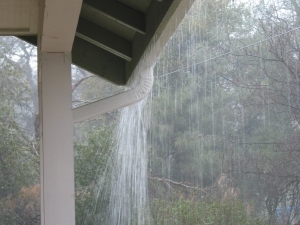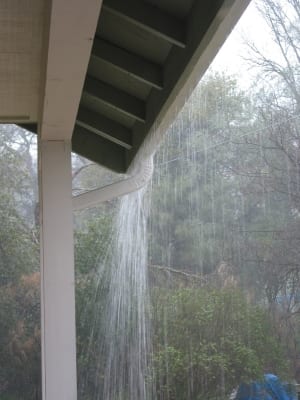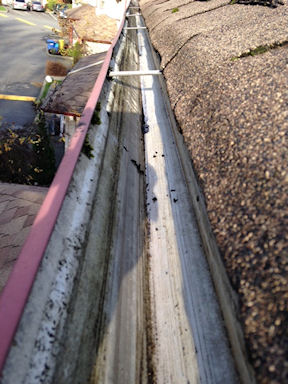The Evolution of Gutter Cleaning Services – Gutter Cleaning Program Care
 In order to maintain a healthy business relationship, both sides must feel good about a service agreement; the purchaser and the service provider. This can be especially challenging with gutter cleaning based on expectations for results of the service. Can one visit in the fall to clean the gutters at a strata ensure that they are functioning properly until the same time next year? Sometimes. But often, this is not the case. This is due to the differences between cleaning gutters and other services. This has led to us to:
In order to maintain a healthy business relationship, both sides must feel good about a service agreement; the purchaser and the service provider. This can be especially challenging with gutter cleaning based on expectations for results of the service. Can one visit in the fall to clean the gutters at a strata ensure that they are functioning properly until the same time next year? Sometimes. But often, this is not the case. This is due to the differences between cleaning gutters and other services. This has led to us to:
The Evolution of Gutter Cleaning Services
Most service providers offer a 1 X Gutter cleaning service. In fact, in the GVRD, this is what most property managers expect is the only option that they are able to find for gutter cleaning. However, in 2009, ServiceMaster Clean Residential introduced a higher level of service in order to meet the actual demands of gutter maintenance around the GVRD. We believe this is the next step in the evolution of gutter cleaning service. It has been met with great success over the years.
We realized that the same issues arose each year during gutter cleaning season and determined it was time to do something to address that. So we took a look at what we routinely faced. We found this necessary in order to ensure both we as the service provider and our customers felt good about the service arrangement.
We found the most common issues are:
-Small areas around a strata needing extra attention, or getting clogged up weeks or months after the initial service was performed.
– Minor issues that due to repair work needed rather than cleaning
-Strata’s not knowing what was done or not, as gutters can be difficult to see inside.
-Understanding what a ‘clean gutter’ is. (Click here for an article on what a clean gutter is)
We found that the approach most people had to addressing any issue with their gutters, was to phone our office and demand that we come back as we had ‘not done the job right.’
While everyone makes mistakes and sometimes things might get overlooked during a service, we found that in the majority of these instances were related to one or more of the four issues outlined above. So in many cases we would do a spot clean for the customer for free, or, clean the area but take photos proving it had been cleaned previously and then charging for the time, or, insist we needed to meet someone on site in order to show them that other problems existed that required repair and could not be fixed with cleaning. No matter what both sides were not left feeling good about the way things unfolded. And that’s not the way we want to do business. We want our customers to feel great about using our company for services. So what we needed was a way to address the reality of the situation so that everyone felt respected, valued, and treated fairly. We did this by adding additional levels of service for low cost in our ‘Gutter Cleaning Maintenance Program’ offering.
Includes all Standard Gutter Cleaning PLUS
- 6 SERVICE CALLS INCLUDED FOR 12 MONTHS AFTER INITIAL CLEANING (Potential Value $ 900.00)
- INVESTIGATE and REPORT ON ANY ISSUES DISCOVERED
- SERVICE CALLS – By including 6 free spots cleans, our customers know we are dedicated to taking care of their ongoing needs, and that we understand a 1x visit to clean gutters does not always provide enough attention to keep gutters functioning properly throughout the year. We anticipate that new clogs can and do happen, and are prepared to fix them as they come up over time. We also look at the bigger picture to determine how best to ensure that the customers gutter systems are maintained.
Do new problems arise because a section of the strata has gutters in heavily treed areas? Did the first service get done early in the season, and a lot of leaves fell after that service was complete? Did a gutter get plugged up because some kids playing with tennis balls sent one up into the gutter that plugged the top of the downspout? It doesn’t matter what the reason – we’ll take care of it, quickly, and at no additional charge when a strata has chosen a Gutter Maintenance Program.
Does this mean we have less incentive to ‘do it right the first time’? Absolutely not! Every trip to a strata costs us in fuel and labour charges. We don’t want to have to go back. But we also want our customers resting assured that we will if necessary to take care of them. That builds a stronger business relationship, and leads to approaching problem situations with a spirit of cooperation and understanding.
- Report Any Issues Discovered
This focuses primarily on providing information regarding the gutter system beyond our ability to address. If there are areas that are off-slope and need to be adjusted, we can inform the strata. We’re also looking for areas of heavy damage, areas which were not installed properly, or areas that are not functioning well due to overtaxing their capacity (may need another downspout installed, etc.)
This information can then be used if strata chooses to adjust their system so that its function is improved
So how can we afford to include all this extra work and service visits?
We charge a small amount more than for a regular gutter cleaning service, yet one additional service call could be $250-$475 at regular price. We can afford to offer this to our customers because with such a large pool of customers each paying a bit more for the full maintenance plan, those who need it can benefit. It’s like insurance; not everyone needs to use all of their service calls, and we can draw upon the pool to ensure our workers are paid for their time. We also grow our business because our customers know we put them first, even if it may cost us a little. That’s something very important to us; great customer relationships.
So if your strata’s haven’t considered a gutter cleaning maintenance program, they should take a look at the option. It’s a solution to the real world issues faced during gutter cleaning to ensure that everyone wins.






